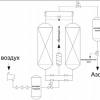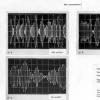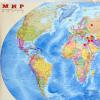How to add transportation costs to the grand estimate. Procurement and storage costs
MDS 81-35.2004
4.64. IN procurement and storage costs include costs associated with placing purchase orders, acceptance, accounting, storage of equipment in a warehouse, inspection and preparation of it for installation, as well as transferring it for installation. They are taken into account in the composition estimated cost equipment. Size procurement and storage costs may be determined by a separate calculation.
MDS 81-2.99
3.3.1. The estimated price for the material is formed on the basis of the following components:
- selling price (including containers, packaging and props);
- markups (surcharges) of supply and sales organizations;
-customs duties and fees (when received from abroad);
- the cost of transportation and loading and unloading work (as a rule, the cost of loading work is taken into account directly by the selling price, and the cost of unloading work is included in unit prices for construction, installation and repair work);
— procurement and storage costs, including kitting costs.
3.3.12. Procurement and storage costs are determined on the basis of calculations based on the prevailing conditions in the region. For construction projects financed from federal budget, they are accepted according to SNiP 4.04-91 standards as a percentage of the cost of materials, including:
By building materials, products and structures (except for metal structures) - 2%;
For metal building structures - 0.75%;
For equipment - 1.2%.
MDS 81-36.2004
1.7. The FER takes into account:
- estimated prices for building materials, products and structures - according to the Federal Collection of Estimated Prices for materials, products and structures used in construction (include average prevailing selling prices and transport costs in the amount of up to 13% of selling prices, taking into account delivery from the ex-warehouse manufacturer to the on-site warehouse for the construction of the facility, including procurement and storage costs and costs of intermediaries in the field of circulation);
Transport costing is the most accurate way to calculate transport costs.
ESTIMATED COST OF MATERIALS
- determined by the formula:
MAT = MATopt + TR + Sk
MATopt– supplier price, rub.
TR– transportation costs, rub.
Sk– warehouse costs, rub.
SUPPLIER PRICE– cost of materials excluding VAT, indicated in the price list, delivery note, etc.
TRANSPORT COSTS– the contractor’s costs for delivering the material from the supplier to the on-site warehouse.
For example: transportation by any type of transport, loading and unloading of material, additional packaging of materials, cargo security, customs duties, cost of storing materials in temporary (transshipment) warehouses, and many others. etc.
WAYS TO CALCULATE TRANSPORT COSTS:
1. COMPLETION OF COST: contains information about the cost of transporting a unit of material over a certain distance and the cost of transporting all material.
It is necessary to deliver 10 tons of sand to the on-site warehouse. The distance between the sand shipment site and the site is 40 km. Loading is carried out by the supplier (i.e. we do not take into account loading costs). The cost of sand (supplier price) is 300 rubles. per ton including VAT.
Calculations:
1. Determine the cost of a unit of measurement (ton) of sand without VAT = 300 rubles. / 1.18 = 254.24 rub.
2. We determine the tariff for transporting 1 ton of sand over 40 km based on the carrier’s information (or according to a directory) – 185.6 rubles.
3. Determine the cost of purchasing and transporting a ton of sand:
RUB 254.24 + 185.6 rub. = 439.4 rub.
4. Determine the cost of purchasing and transporting 10 tons of sand:
439.4 x 10t = 4398.4 rubles.
If it is not possible to prepare a transport estimate, the customer and the contractor agree on the percentage of transport costs from the cost of materials (from the supplier’s price). For example, during finishing work, the list of materials can be large, there can be several suppliers of materials, the amount of materials can range from several grams to several tons. In this case, it is impossible to calculate transport costing. It is convenient to calculate transport costs as a percentage.
The percentage value is taken either as statistical average , adopted in a given region, or the contractor calculates his own (individual) percentage based on data for the previous reporting period .
For example, you can collect accounting data for the previous year on the amount of materials used and the amount of transportation costs and calculate the average percentage of transportation costs.
Example: let's calculate transportation costs for the data in Table 1
1. The consumption of the material “Ready finishing mortar, heavy, cement-lime 1:1:6” will be: 0.6 cubic meters. x 50 sq. m. = 0.3 cubic meters
2. Let’s say the supplier’s price excluding VAT is 2,400 rubles. / m.cub. Then the cost of the solution required to complete the work will be: 0.3 cubic meters. x 2400 rub. = 720 rub.
3. Contractual percentage TR = 10%
4. The amount of transportation costs: 720 rubles. x 10% = 72 rub.
5. Total cost of materials including transportation costs: 720 + 72 = 792 rubles.
The contractual percentage of transport costs is a simple and convenient method of calculation, but does not reflect actual costs (not an accurate method).
3. ACTUAL TRANSPORT COSTS – a document is drawn up with a list of actual transportation costs, the total is calculated, and this amount is included in the act of completed work as a separate line.
It is used when it is not possible to create a transport estimate, but it is still necessary to take into account the exact (actual) amount of transport costs.
WAREHOUSE COSTS– costs incurred when storing materials in an on-site warehouse. Determined either by fact or by formula:
Sk = (MATopt + TP) x %
For example, for construction projects financed from the federal budget, they are accepted:
For building materials, products, structures – 2%;
For metal building structures – 0.75%
Example: let's calculate warehouse costs and the estimated cost of materials for single-layer wall plaster lime mortar, provided that 50 square meters are plastered. m. (Table 1).
1. It was previously determined that the cost of materials including transportation costs is 792 rubles.
2. Warehouse costs will be: 792 rubles. x 2% = 16 rub.
3. Total estimated cost of materials (MAT): 792 rubles. + 16 rub. = 808 rub.
Based on previous data, we will determine the direct costs for single-layer plastering of concrete walls with lime mortar, provided that 50 square meters are plastered. (Table 1).
OTRS = 1808 rub.
EM = 11 rub. (including ZPM = 5 rub.)
MAT = 808 rub.
PZ = OTRS + EM + MAT = 2627 rub.
Direct costs are calculated for EACH POSITION OF THE LOCAL ESTIMATE, FOR EACH SECTION OF THE LOCAL ESTIMATE AND OVER THE ENTIRE LOCAL ESTIMATE IN GENERAL.
Estimated standards- this is a generalized name for a set of estimated norms, rates and prices, combined into separate collections, they serve as the basis for determining the estimated cost of construction
Estimated norm- the totality of resources (labor costs of workers, operating time of construction machines, needs for materials, products and structures, etc.), set to the accepted meter for construction, installation or other work.
The main function of estimate standards is to determine the standard amount of resources required to perform the corresponding type of work, as the basis for the subsequent transition to cost indicators
Estimated standards are divided into the following types:
1.by level of application:
state (federal) (SFSN 81); these include estimate standards that are part of group 8 of subgroups 81, 82 and 83 “Documents on Economics”.
industrial and industrial (POSN 81); these include estimate standards introduced for construction carried out within the relevant industry.
territorial (TSN 81); these include estimate standards introduced for construction carried out on the territory of the relevant constituent entity of the Russian Federation.
branded (user’s own regulatory framework) (FSN 81). These include estimated standards that take into account the actual operating conditions of a specific organization - the producer of the work.
individual estimate standards (ISN) - In the absence of separate standards for the work technologies envisaged in the project in the current collections of estimate standards and prices, it is allowed to develop appropriate individual estimate standards and unit prices, which are approved by the customer (investor) as part of the project (work draft).
2.by degree of enlargement
elemental estimate standards(ESN) and unit prices (EP). Elemental estimate standards include state element estimate standards and individual element estimate standards, as well as standards for types of work.
enlarged estimate norms (USN) and indicators (USP). Enlarged estimate standards are intended to determine the estimated cost of buildings and structures at the first stage of design, when working drawings have not yet been developed.
STS in %: Overhead costs, estimated profit, winter time, temporary buildings and structures, maintenance of the directorate, etc.
USP: UPBS (aggregated indicators of the estimated cost of buildings and structures, PVR by type of work, aggregated indicators for certain types of construction.



















